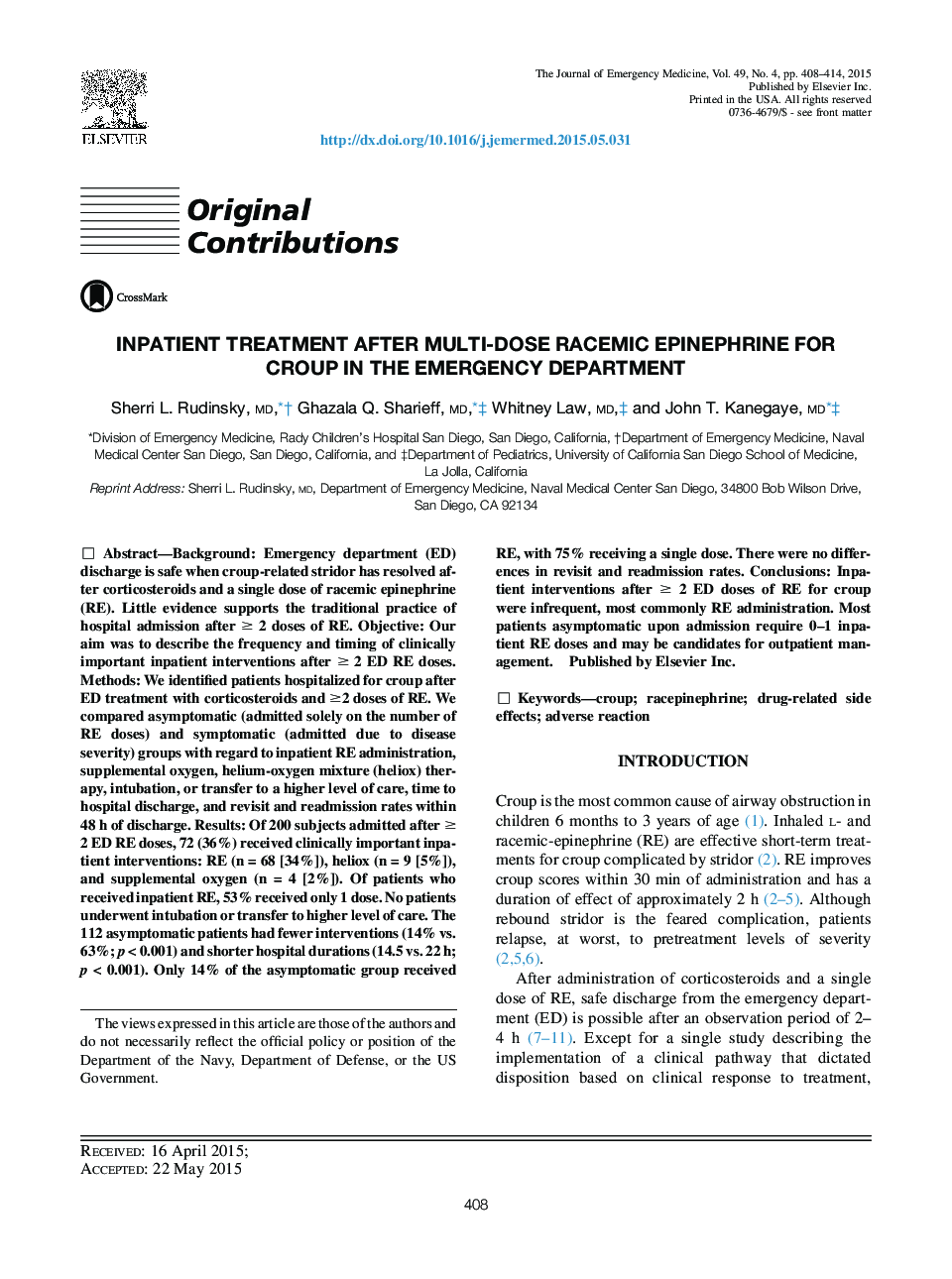| Article ID | Journal | Published Year | Pages | File Type |
|---|---|---|---|---|
| 3246127 | The Journal of Emergency Medicine | 2015 | 7 Pages |
BackgroundEmergency department (ED) discharge is safe when croup-related stridor has resolved after corticosteroids and a single dose of racemic epinephrine (RE). Little evidence supports the traditional practice of hospital admission after ≥ 2 doses of RE.ObjectiveOur aim was to describe the frequency and timing of clinically important inpatient interventions after ≥ 2 ED RE doses.MethodsWe identified patients hospitalized for croup after ED treatment with corticosteroids and ≥2 doses of RE. We compared asymptomatic (admitted solely on the number of RE doses) and symptomatic (admitted due to disease severity) groups with regard to inpatient RE administration, supplemental oxygen, helium-oxygen mixture (heliox) therapy, intubation, or transfer to a higher level of care, time to hospital discharge, and revisit and readmission rates within 48 h of discharge.ResultsOf 200 subjects admitted after ≥ 2 ED RE doses, 72 (36%) received clinically important inpatient interventions: RE (n = 68 [34%]), heliox (n = 9 [5%]), and supplemental oxygen (n = 4 [2%]). Of patients who received inpatient RE, 53% received only 1 dose. No patients underwent intubation or transfer to higher level of care. The 112 asymptomatic patients had fewer interventions (14% vs. 63%; p < 0.001) and shorter hospital durations (14.5 vs. 22 h; p < 0.001). Only 14% of the asymptomatic group received RE, with 75% receiving a single dose. There were no differences in revisit and readmission rates.ConclusionsInpatient interventions after ≥ 2 ED doses of RE for croup were infrequent, most commonly RE administration. Most patients asymptomatic upon admission require 0–1 inpatient RE doses and may be candidates for outpatient management.
